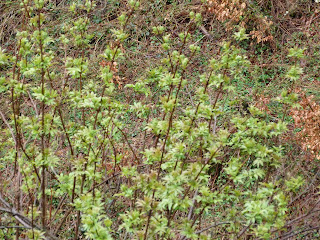Because of the altitude, in some lower places of Navarre three weeks ago they started flowering, but is now, when we can see them in flowering ,always in places where water is near , either surface or underground.
 |
| grey willow(Salix atrocinerea) |
In the streams or between the wood, now we can see trees of white or yellowish flowers in the case of plants with male flowers, and green in the case of plants with female flowers.
It measures about 11 meters high.It grows fast and usually die soon, in the scale of Time of the trees.
Its wood is not very good quality, but like all willows, especially in its bark and flowers, there is the active ingredient called Salicin, from which later would take the salicylic acid (Does it sound?) Popularly known as aspirin . Today, this acid is synthetic, no from the plant.
Smell their leaves, or scrunch up a dry twig in yours hands and then you will remember that smell like the medicine cabinet.!
 |
| Male Flowers |
Although it may be obvious, one might note that the leaves will sprout later than we now see, though not so in all species.
If that might be interesting to tell who has not had a chance to look, that species removed before the leaves are often the first to lose them , so I think that seems to have a certain number of days in which plants have leaves ,and would change in deciduous species would be the time at which they start.
In any case, the weather will happen before or later.
.






















